Facial Fractures Have Similar Outcomes When Managed by Either Otolaryngology or Plastic Surgery: Encounters from a Single Level I Trauma Center
Abstract
:Introduction
Methods
Results
Demographics
Diagnostics and Interventions
Antibiotics
Outcomes
Discussion
Conclusion
Author Contributions
Funding
Institutional Review Board Statement
Code Availability
Data Availability Statement
Conflicts of Interest
References
- Allareddy, V.; Allareddy, V.; Nalliah, R.P. Epidemiology of facial fracture injuries. J Oral Maxillofac Surg. 2011, 69, 2613–2618. [Google Scholar] [CrossRef]
- Chukwulebe, S.; Hogrefe, C. The diagnosis and management of facial bone fractures. Emerg Med Clin North Am. 2019, 37, 137–151. [Google Scholar] [CrossRef] [PubMed]
- Baylan, J.M.; Jupiter, D.; Parker, W.L.; Czerwinski, M. Management of zygomatic fractures: a national survey. J Craniofac Surg. 2016, 27, 1571–1575. [Google Scholar] [CrossRef] [PubMed]
- Susarla, S.M.; Mundinger, G.S.; O’Brien-Coon, D.; et al. Does training background influence decision-making in the management of zygomaticomaxillary complex fractures? J Oral Maxillofac Surg. 2016, 74, 995–1012. [Google Scholar] [CrossRef]
- Bagheri, S.C.; Dimassi, M.; Shahriari, A.; Khan, H.A.; Jo, C.; Steed, M.B. Facial trauma coverage among level-1 trauma centers of the United States. J Oral Maxillofac Surg. 2008, 66, 963–967. [Google Scholar] [CrossRef]
- Choi, K.J.; Chang, B.; Woodard, C.R.; Powers, D.B.; Marcus, J.R.; Puscas, L. Survey of current practice patterns in the management of frontal sinus fractures. Craniomaxillofac Trauma Reconstr. 2017, 10, 106–116. [Google Scholar] [CrossRef]
- Cohen, L.M.; Shaye, D.A.; Yoon, M.K. Isolated orbital floor fracture management: a survey and comparison of American oculofacial and facial plastic surgeon preferences. Craniomaxillofac Trauma Reconstr. 2019, 12, 112–121. [Google Scholar] [CrossRef] [PubMed]
- Le, B.T.; Holmgren, E.P.; Holmes, J.D.; Ueeck, B.A.; Dierks, E.J. Referral patterns for the treatment of facial trauma in teaching hospitals in the United States. J Oral Maxillofac Surg. 2003, 61, 557–560. [Google Scholar] [CrossRef]
- Farber, S.J.; Nguyen, D.C.; Skolnick, G.B.; Woo, A.S.; Patel, K.B. Current management of zygomaticomaxillary complex fractures: a multidisciplinary survey and literature review. Craniomaxillofac Trauma Reconstr. 2016, 9, 313–322. [Google Scholar] [CrossRef]
- Kim, I.A.; Boahene, K.D.; Byrne, P.J. Trauma in facial plastic surgery: frontal sinus fractures. Facial Plast Surg Clin North Am. 2017, 25, 503–511. [Google Scholar] [CrossRef]
- Marinheiro, B.H.; de Medeiros, E.H.; Sverzut, C.E.; Trivellato, A.E. Frontal bone fractures. J Craniofac Surg. 2014, 25, 2139–2143. [Google Scholar] [CrossRef] [PubMed]
- Gomi, H.; Solomkin, J.S.; Schlossberg, D.; et al. Tokyo Guidelines 2018: antimicrobial therapy for acute cholangitis and cholecystitis. J Hepatobiliary Pancreat Sci. 2018, 25, 3–16. [Google Scholar] [CrossRef]
- Gúerin, C.; Reignier, J.; Richard, J.C.; et al. Prone positioning in severe acute respiratory distress syndrome. N Engl J Med. 2013, 368, 2159–2168. [Google Scholar] [PubMed]
- Ko, A.; Harada, M.Y.; Barmparas, G.; et al. Association between enoxaparin dosage adjusted by anti-factor Xa trough level and clinically evident venous thromboembolism after trauma. JAMA Surg. 2016, 151, 1006–1013. [Google Scholar] [PubMed]
- Rosenberg, G.M.; Shearer, E.J.; Zion, S.R.; et al. Implementation challenges using a novel method for collecting patientreported outcomes after injury. J Surg Res. 2019, 241, 277–284. [Google Scholar] [CrossRef]
- Boljevic, T.; Vukcevic, B.; Pesic, Z.; Boljevic, A. The quality of life of patients with surgically treated mandibular fractures and the relationship of the posttraumatic pain and trismus with the postoperative complications: a prospective study. Medicina (Kaunas). 2019, 55, E109. [Google Scholar]
- Pickrell, B.B.; Hollier, L.H., Jr. Evidence-based medicine: mandible fractures. Plast Reconstr Surg. 2017, 140, 192e–200e. [Google Scholar] [CrossRef]
- Rudkin, S.E.; Oman, J.; Langdorf, M.I.; et al. The state of ED on-call coverage in California. Am J Emerg Med. 2004, 22, 575–581. [Google Scholar]
- Mundinger, G.S.; Borsuk, D.E.; Okhah, Z.; et al. Antibiotics and facial fractures: evidence-based recommendations compared with experience-based practice. Craniomaxillofac Trauma Reconstr. 2015, 8, 64–78. [Google Scholar]
- Brooke, S.M.; Goyal, N.; Michelotti, B.F.; et al. A Multidisciplinary evaluation of prescribing practices for prophylactic antibiotics in operative and nonoperative facial fractures. J Craniofac Surg. 2015, 26, 2299–2303. [Google Scholar]
- Dougherty, W.M.; Christophel, J.J.; Park, S.S. Evidence-based medicine in facial trauma. Facial Plast Surg Clin North Am. 2017, 25, 629–643. [Google Scholar] [PubMed]
- Delaplain, P.T.; Phillips, J.L.; Lundeberg, M.; et al. No reduction in surgical site infection obtained with post-operative antibiotics in facial fractures, regardless of duration or anatomic location: a systematic review and meta-analysis. Surg Infect (Larchmt). 2019, 21, 112–121. [Google Scholar] [PubMed]

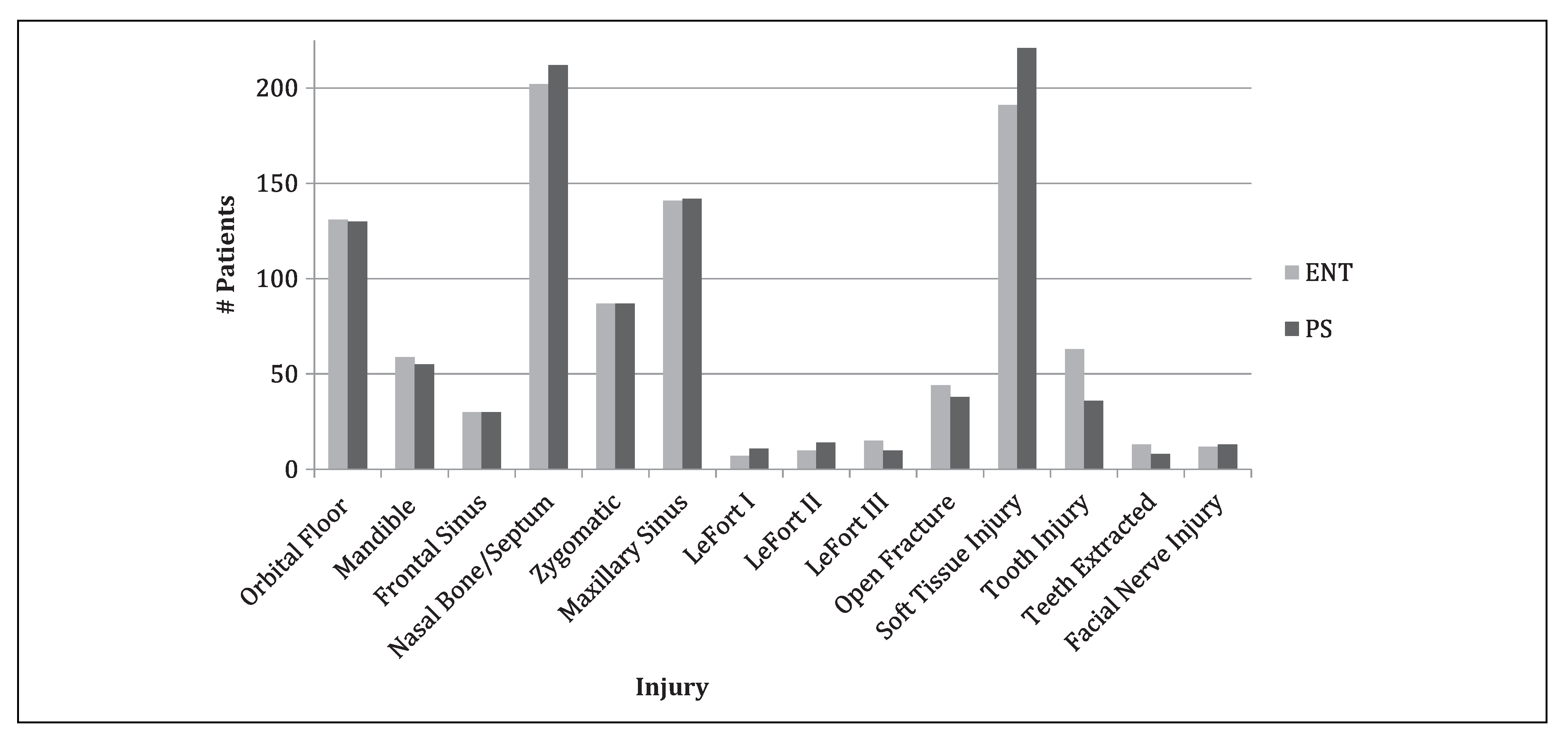
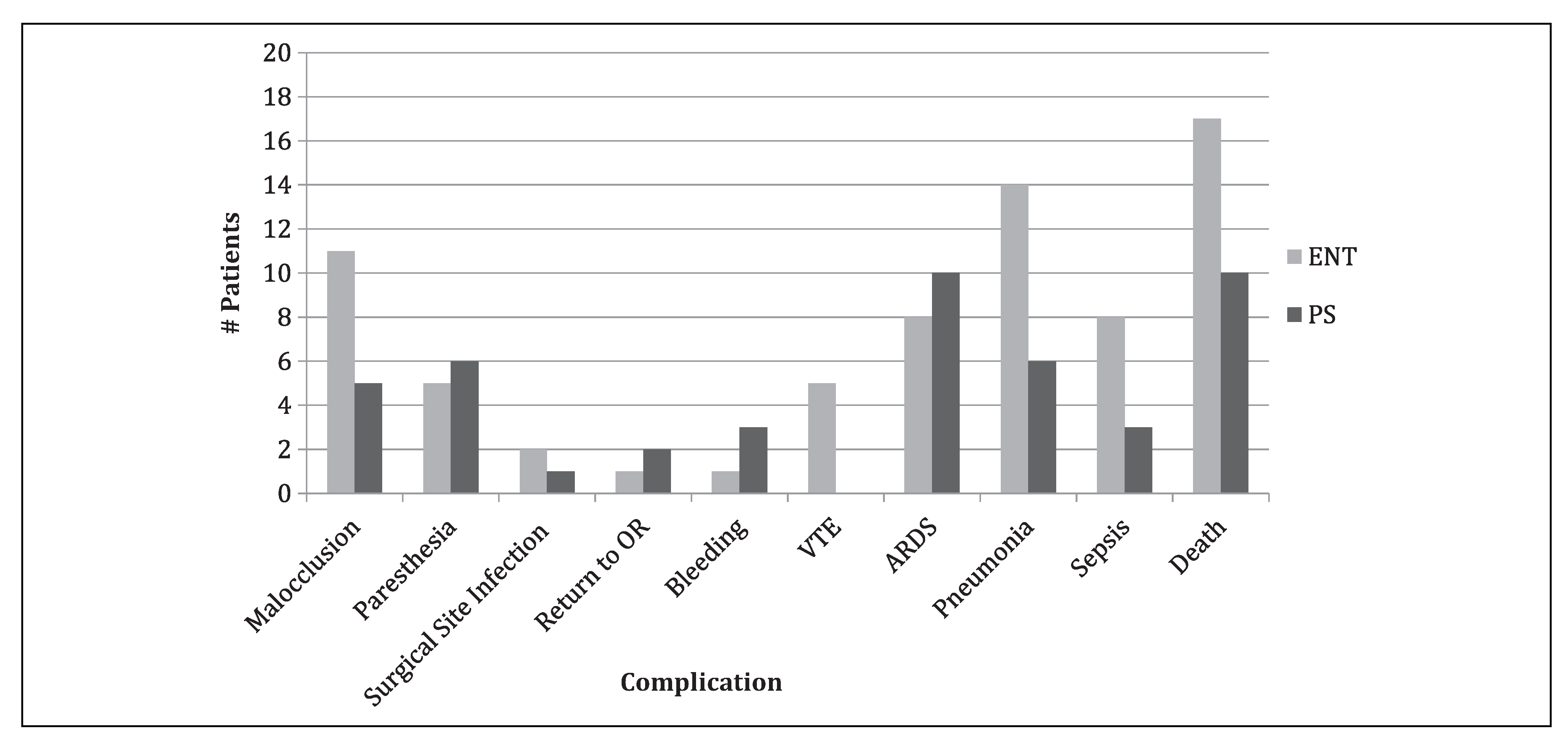
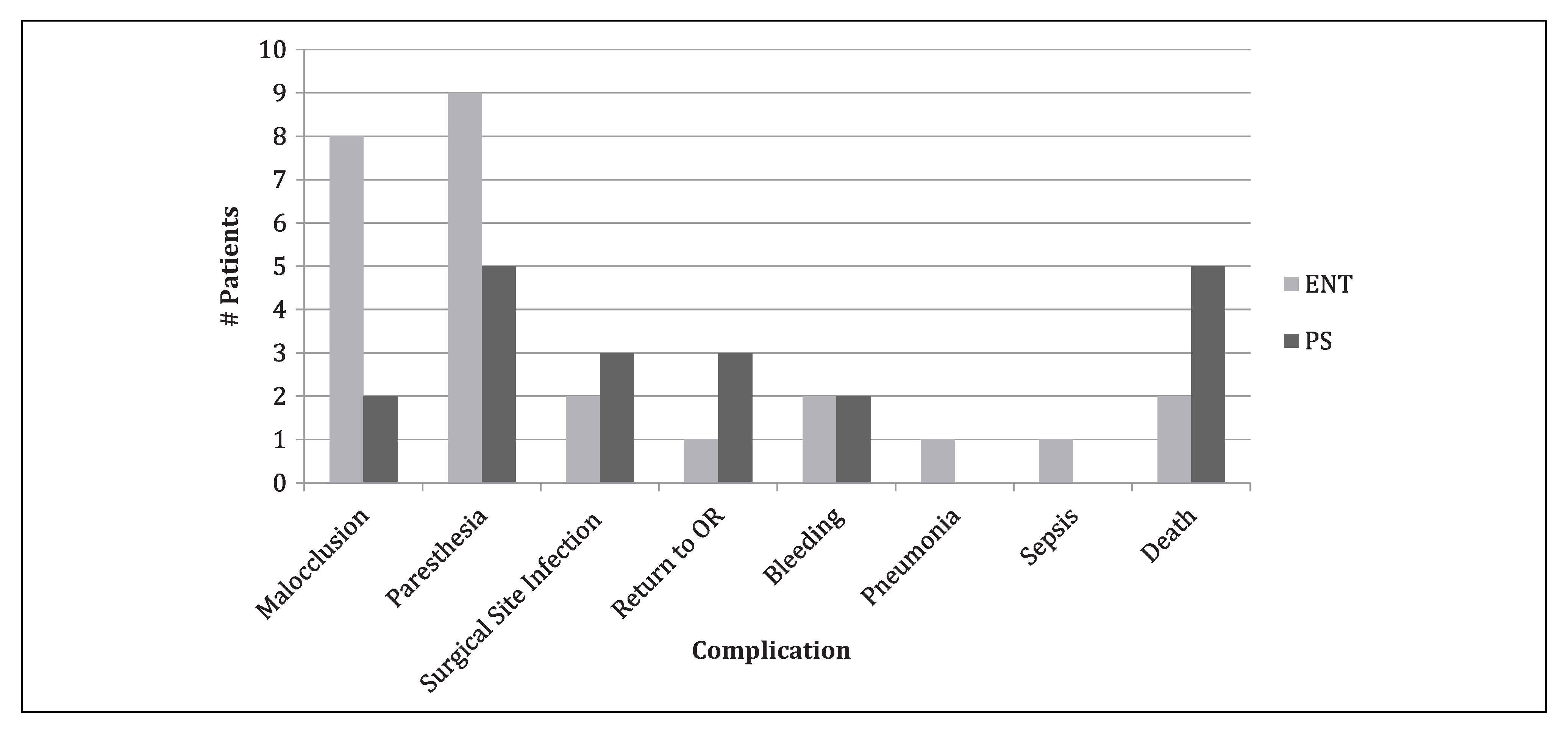
 |
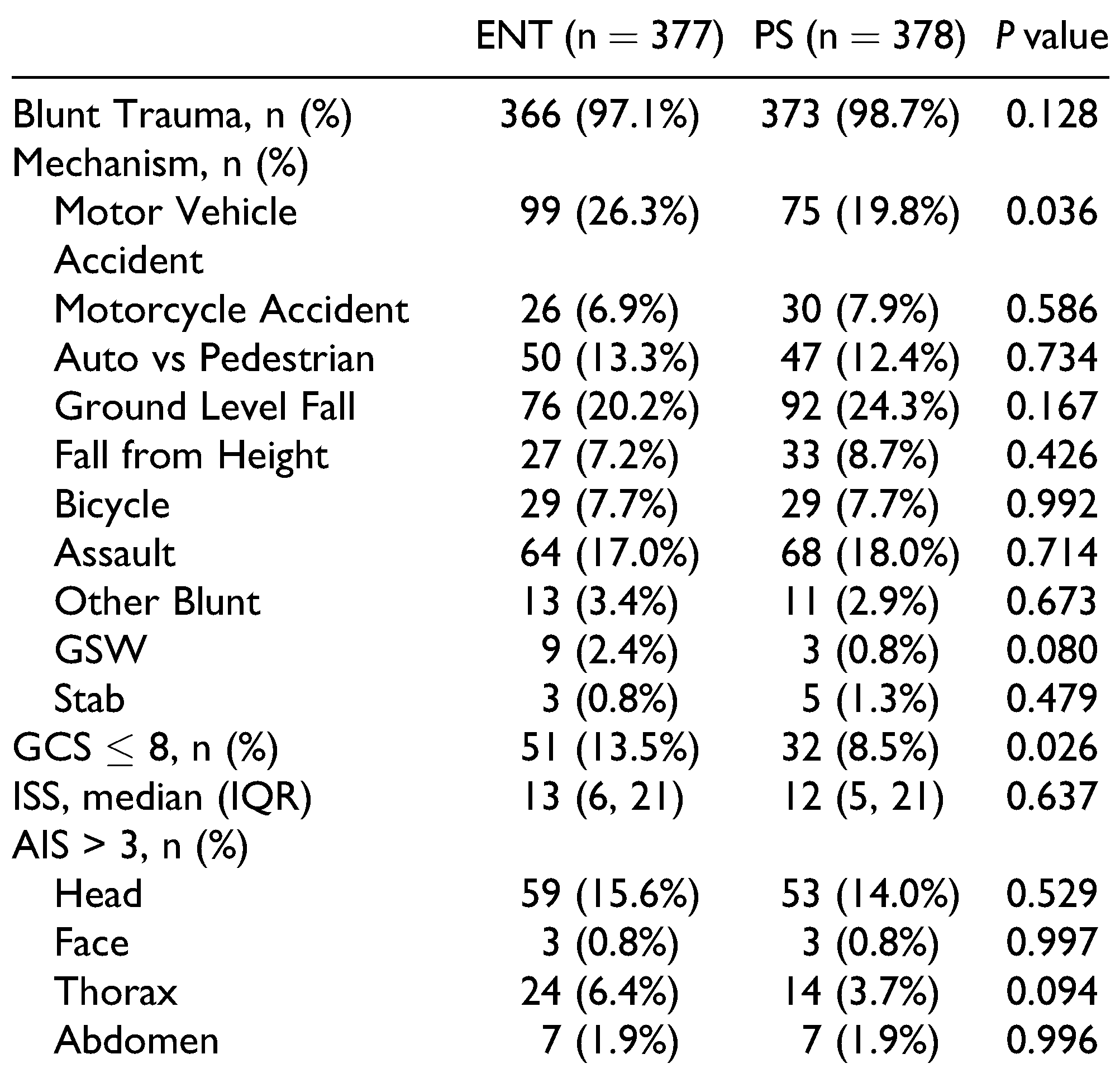 |
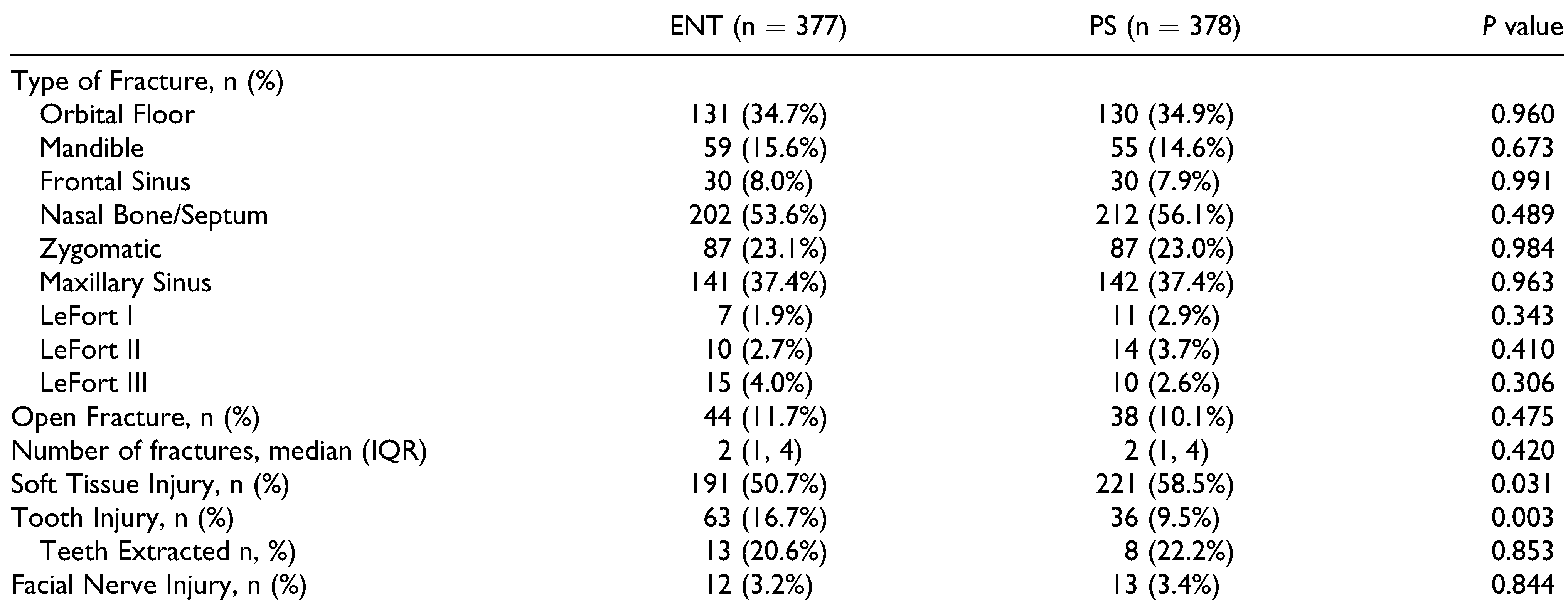 |
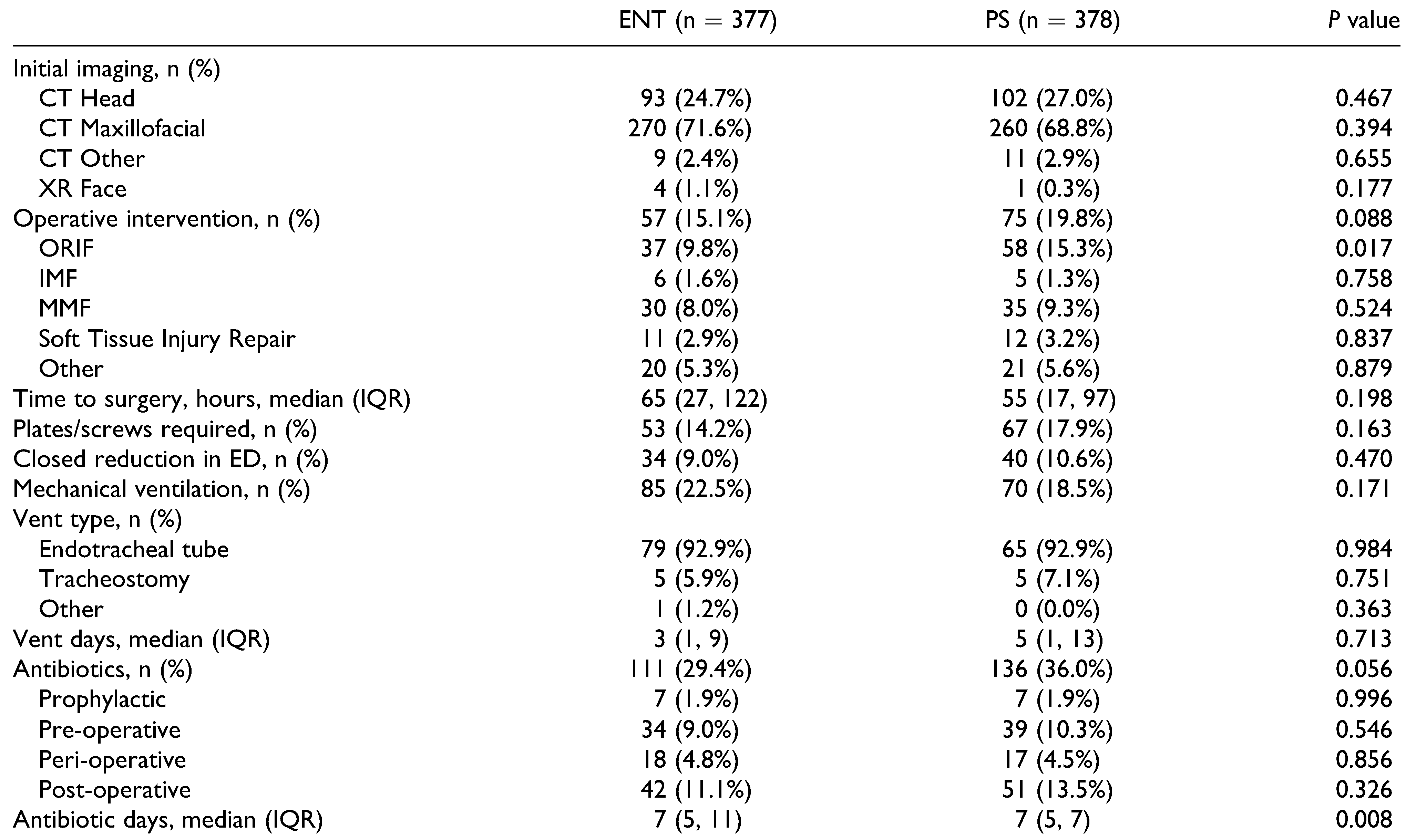 |
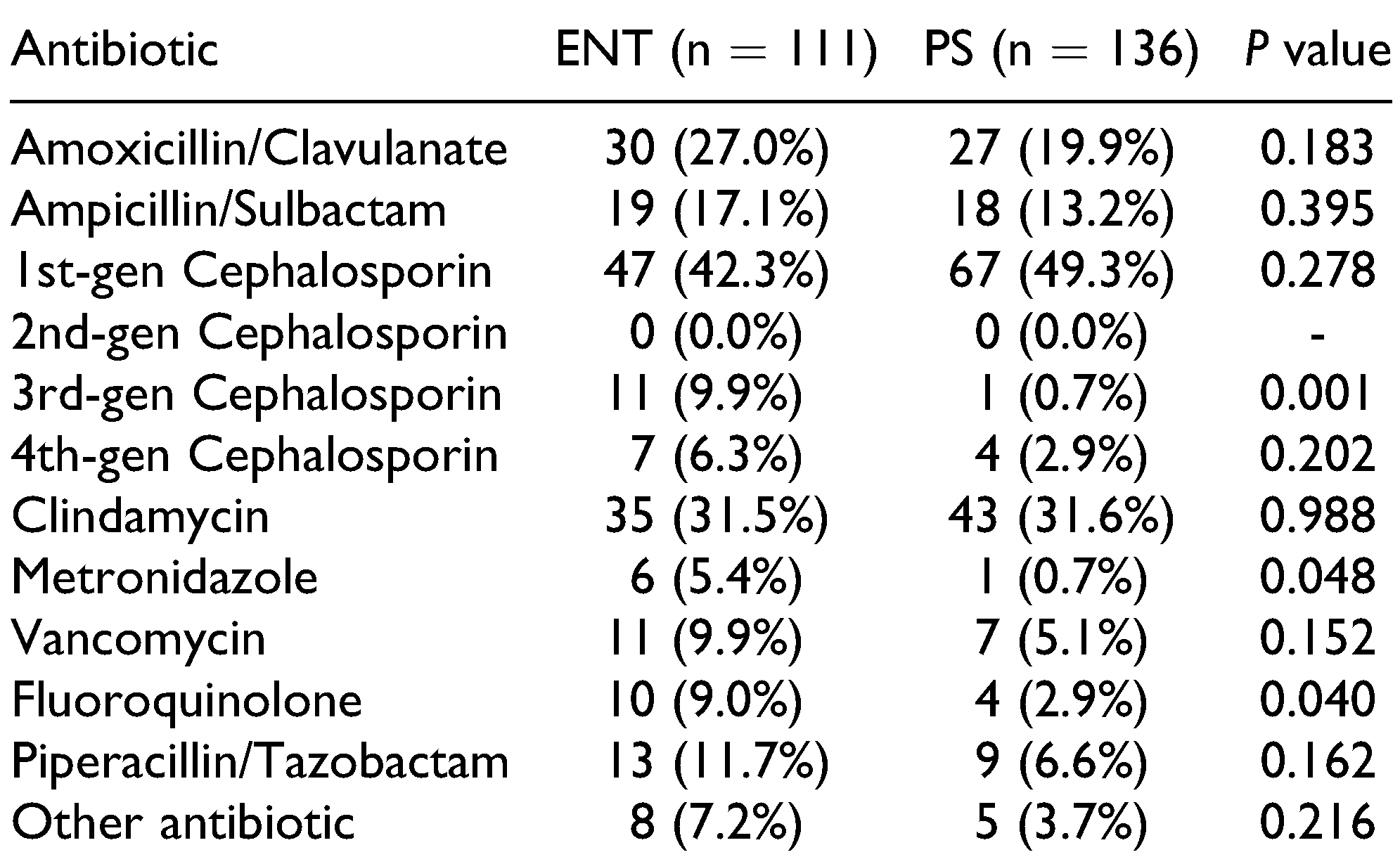 |
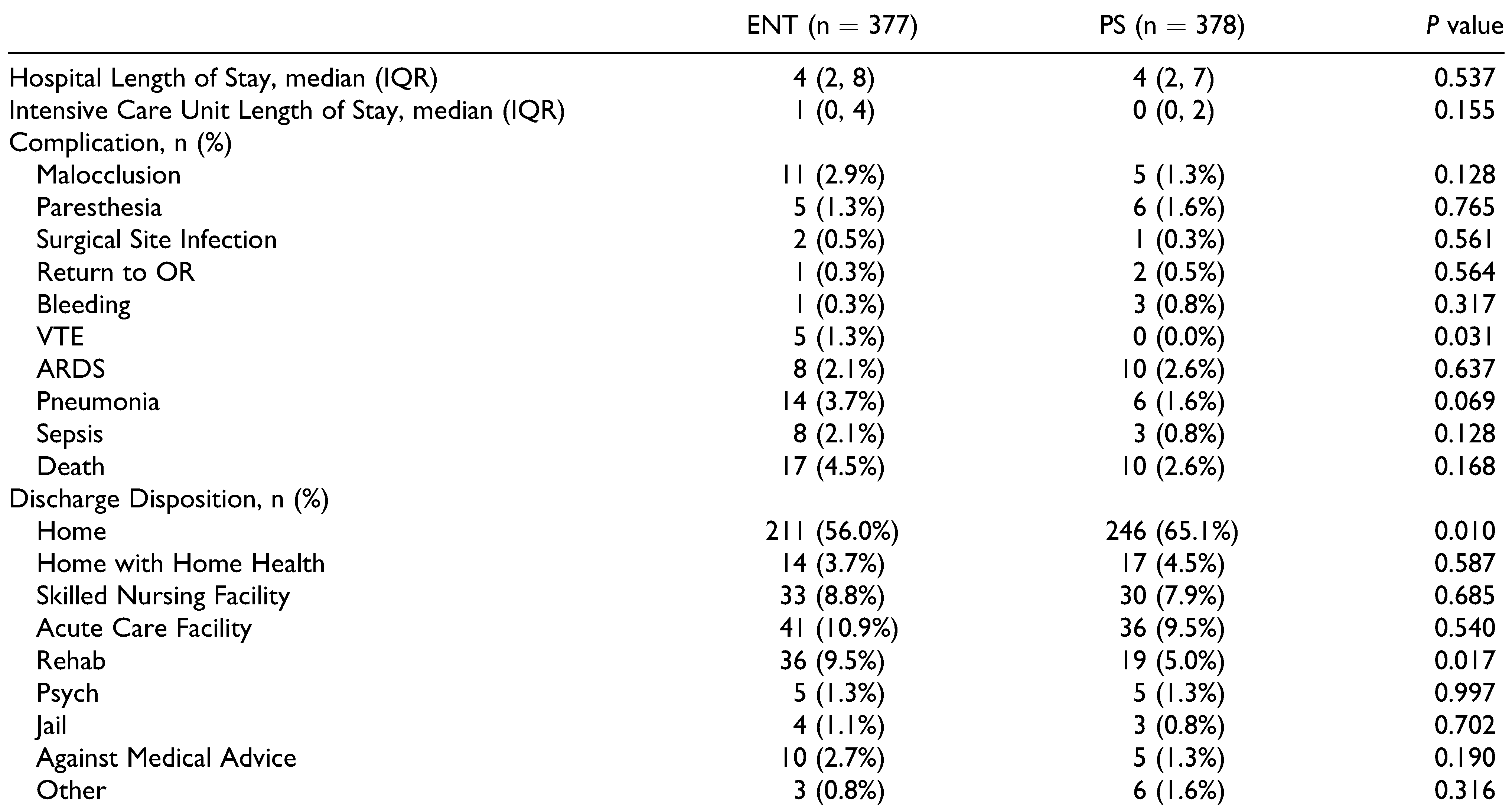 |
 |
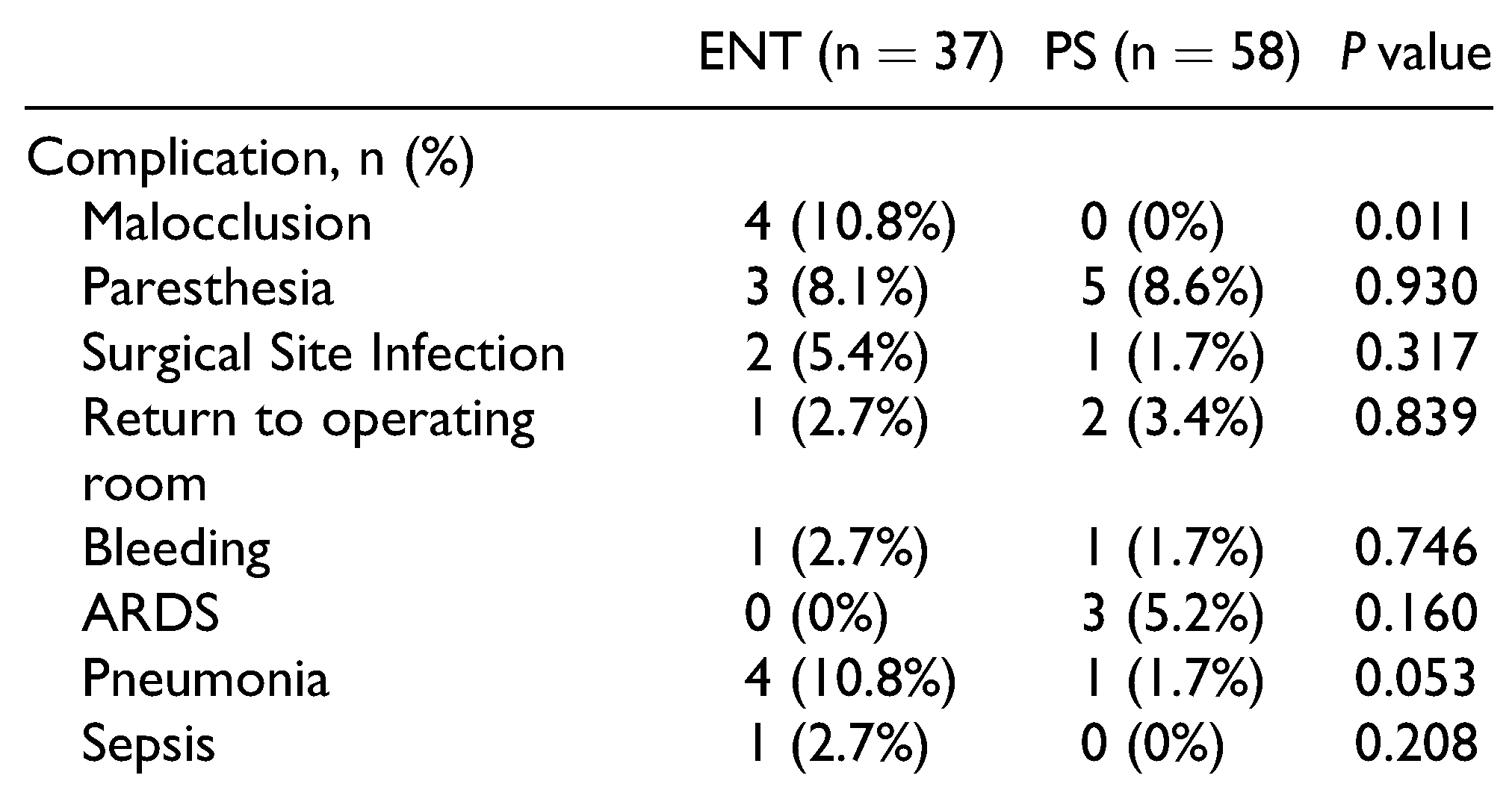 |
 |
© 2021 by the author. The Author(s) 2021.
Share and Cite
Christian, A.; Sun, B.J.; Khoshab, N.; Grigorian, A.; Cantwell, C.Y.; Melucci, S.A.; Hu, A.C.; Kuza, C.M.; Lekawa, M.E.; Nahmias, J. Facial Fractures Have Similar Outcomes When Managed by Either Otolaryngology or Plastic Surgery: Encounters from a Single Level I Trauma Center. Craniomaxillofac. Trauma Reconstr. 2022, 15, 111-121. https://doi.org/10.1177/19433875211020615
Christian A, Sun BJ, Khoshab N, Grigorian A, Cantwell CY, Melucci SA, Hu AC, Kuza CM, Lekawa ME, Nahmias J. Facial Fractures Have Similar Outcomes When Managed by Either Otolaryngology or Plastic Surgery: Encounters from a Single Level I Trauma Center. Craniomaxillofacial Trauma & Reconstruction. 2022; 15(2):111-121. https://doi.org/10.1177/19433875211020615
Chicago/Turabian StyleChristian, Ashton, Beatrice J. Sun, Nima Khoshab, Areg Grigorian, Christina Y. Cantwell, Sean A. Melucci, Allison C. Hu, Catherine M. Kuza, Michael E. Lekawa, and Jeffry Nahmias. 2022. "Facial Fractures Have Similar Outcomes When Managed by Either Otolaryngology or Plastic Surgery: Encounters from a Single Level I Trauma Center" Craniomaxillofacial Trauma & Reconstruction 15, no. 2: 111-121. https://doi.org/10.1177/19433875211020615
APA StyleChristian, A., Sun, B. J., Khoshab, N., Grigorian, A., Cantwell, C. Y., Melucci, S. A., Hu, A. C., Kuza, C. M., Lekawa, M. E., & Nahmias, J. (2022). Facial Fractures Have Similar Outcomes When Managed by Either Otolaryngology or Plastic Surgery: Encounters from a Single Level I Trauma Center. Craniomaxillofacial Trauma & Reconstruction, 15(2), 111-121. https://doi.org/10.1177/19433875211020615




